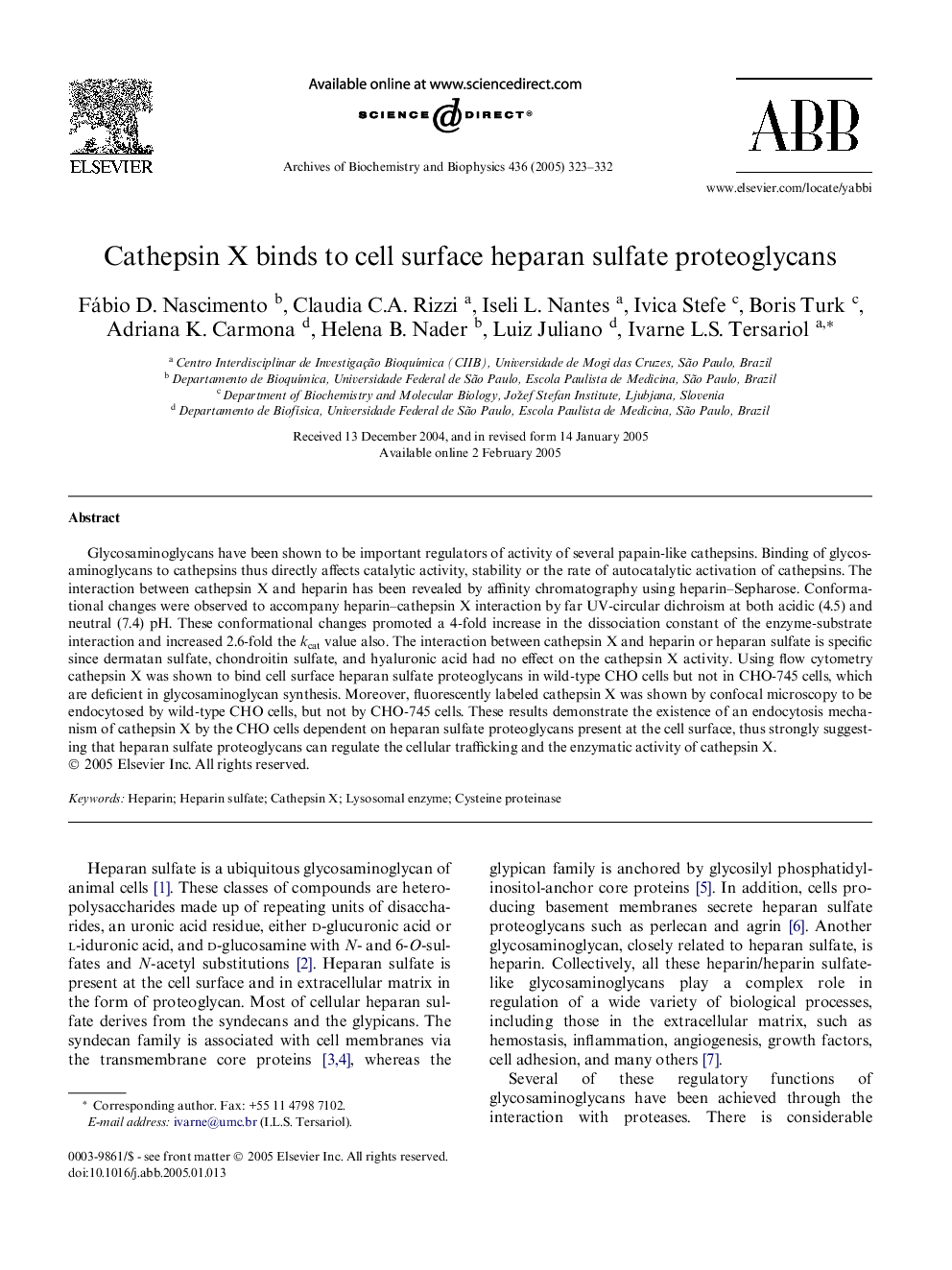| Article ID | Journal | Published Year | Pages | File Type |
|---|---|---|---|---|
| 9882250 | Archives of Biochemistry and Biophysics | 2005 | 10 Pages |
Abstract
Glycosaminoglycans have been shown to be important regulators of activity of several papain-like cathepsins. Binding of glycosaminoglycans to cathepsins thus directly affects catalytic activity, stability or the rate of autocatalytic activation of cathepsins. The interaction between cathepsin X and heparin has been revealed by affinity chromatography using heparin-Sepharose. Conformational changes were observed to accompany heparin-cathepsin X interaction by far UV-circular dichroism at both acidic (4.5) and neutral (7.4) pH. These conformational changes promoted a 4-fold increase in the dissociation constant of the enzyme-substrate interaction and increased 2.6-fold the kcat value also. The interaction between cathepsin X and heparin or heparan sulfate is specific since dermatan sulfate, chondroitin sulfate, and hyaluronic acid had no effect on the cathepsin X activity. Using flow cytometry cathepsin X was shown to bind cell surface heparan sulfate proteoglycans in wild-type CHO cells but not in CHO-745 cells, which are deficient in glycosaminoglycan synthesis. Moreover, fluorescently labeled cathepsin X was shown by confocal microscopy to be endocytosed by wild-type CHO cells, but not by CHO-745 cells. These results demonstrate the existence of an endocytosis mechanism of cathepsin X by the CHO cells dependent on heparan sulfate proteoglycans present at the cell surface, thus strongly suggesting that heparan sulfate proteoglycans can regulate the cellular trafficking and the enzymatic activity of cathepsin X.
Related Topics
Life Sciences
Biochemistry, Genetics and Molecular Biology
Biochemistry
Authors
Fábio D. Nascimento, Claudia C.A. Rizzi, Iseli L. Nantes, Ivica Stefe, Boris Turk, Adriana K. Carmona, Helena B. Nader, Luiz Juliano, Ivarne L.S. Tersariol,
